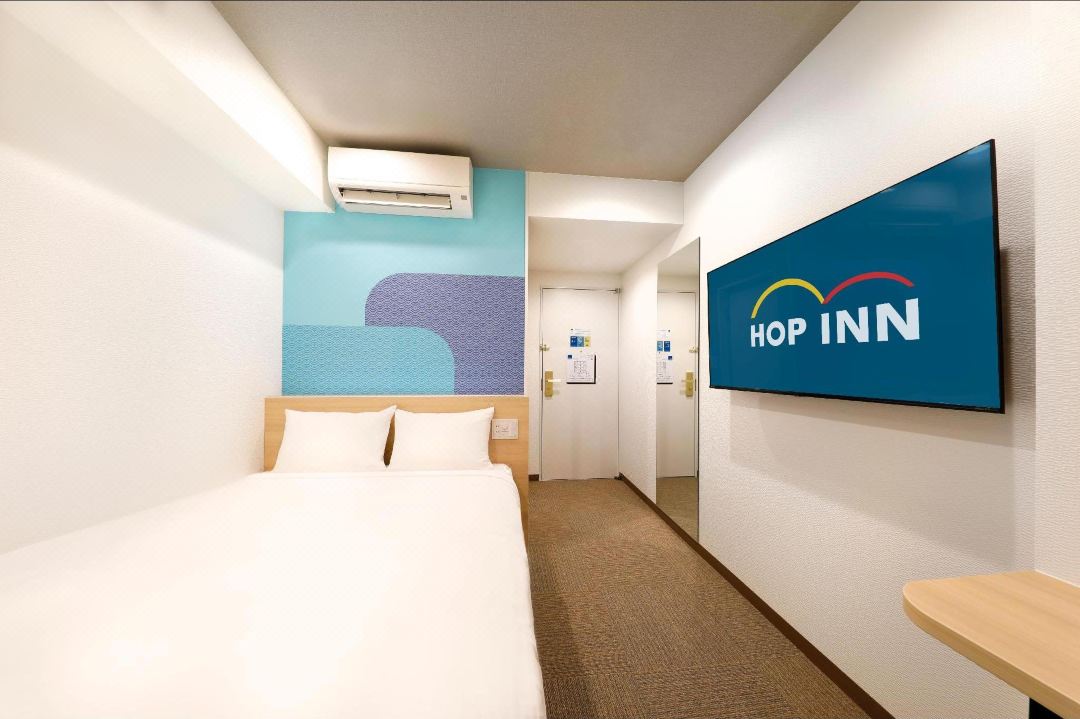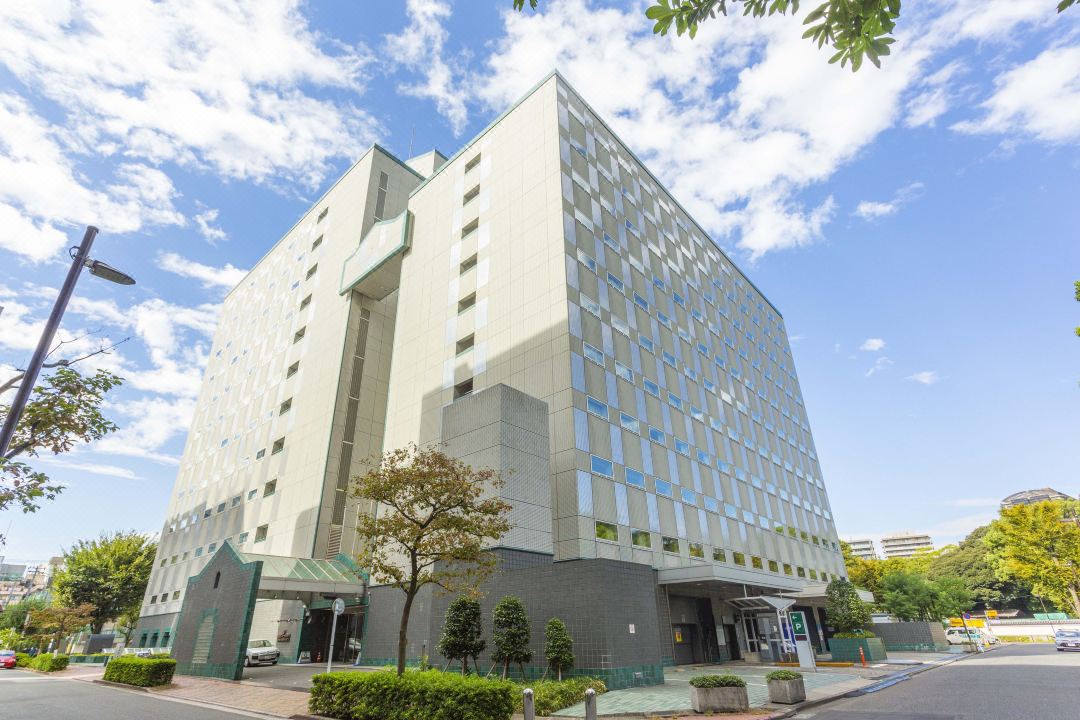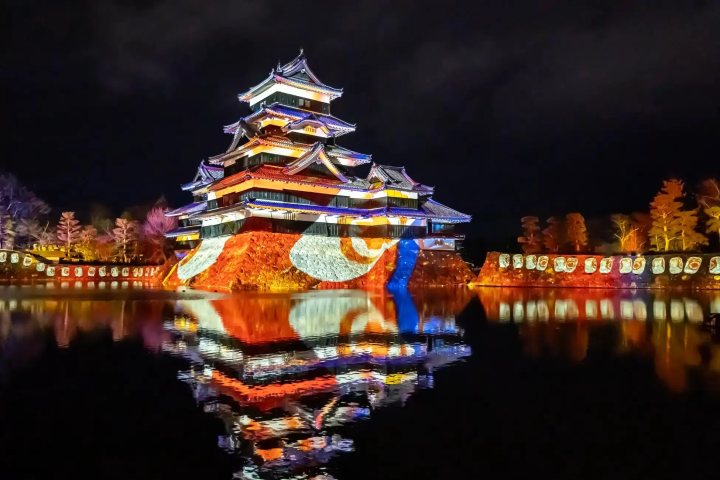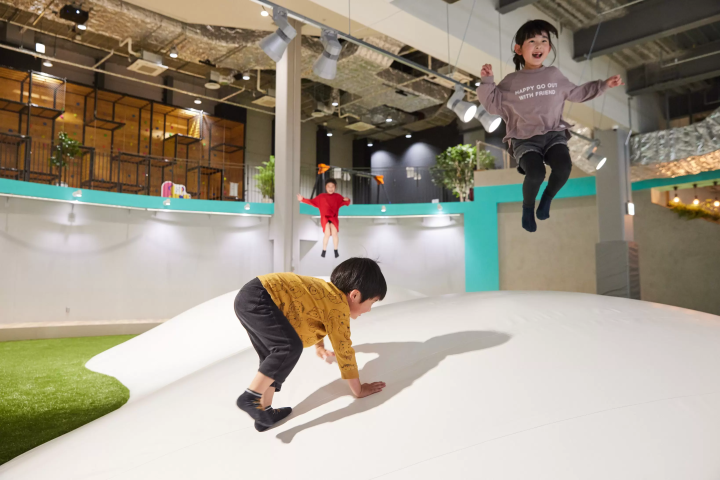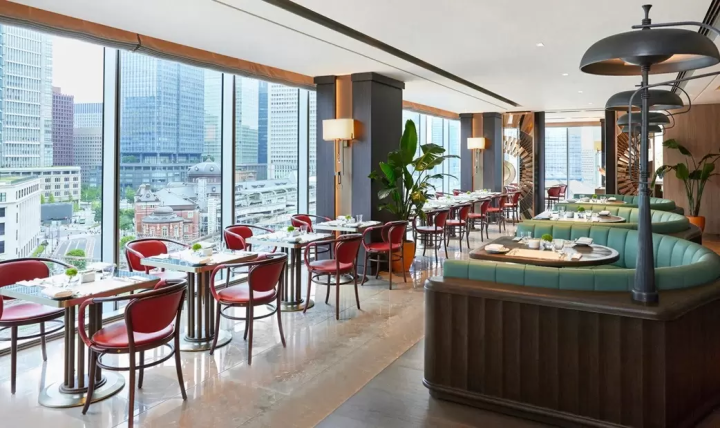Taking a Break in Yanesen—Traditional Ryokan: Sawanoya

Ryokan Sawanoya is located in the popular Yanaka district of Tokyo, a traditional area near Ueno. This installment of Tokyo Ryokan Stories focuses on Ryokan Sawanoya introducing the story of this facility along with its rooms and services.
Hello, and welcome back to Tokyo Ryokan Stories, my series about ryokan and hotels in Tokyo! My name is Roza Akino, and I live and work in Japan. I love staying at ryokan (traditional inns) whenever I go on a trip. Join me as I explore the lesser-known ryokan and hotels throughout Tokyo!
Today’s ryokan, Sawanoya is located in the popular Yanaka district of Tokyo. Yanaka is a traditional area where the shitamachi old-town atmosphere can be strongly felt. With many small shops that specialize in sweets, food, and traditional crafts made by artisans, it’s the perfect place to get lost for an afternoon.
As I’m walking through the streets on my way to Sawanoya, I pass by several interesting-looking shops. It’s been too long since I’ve come out to this area, and the air is full of a type of nostalgia you rarely get in a big, modern city like Tokyo.
I finally arrive at my destination, and am surprised to see the completely traditional-looking exterior of the ryokan despite its location in metropolitan Tokyo.
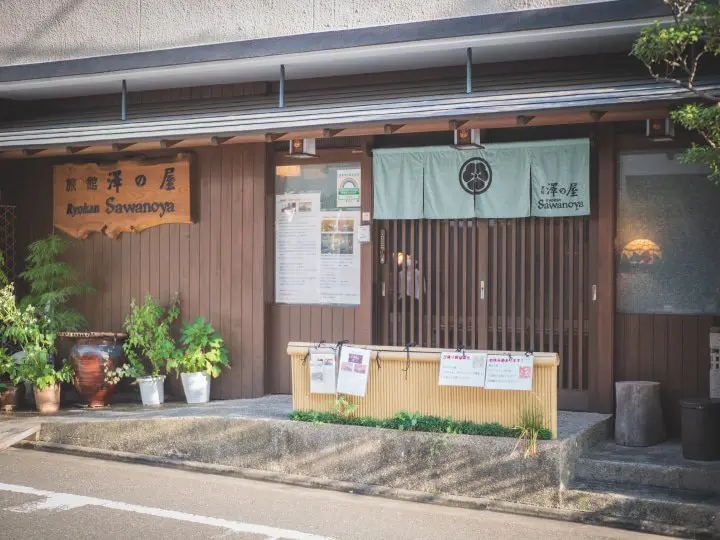
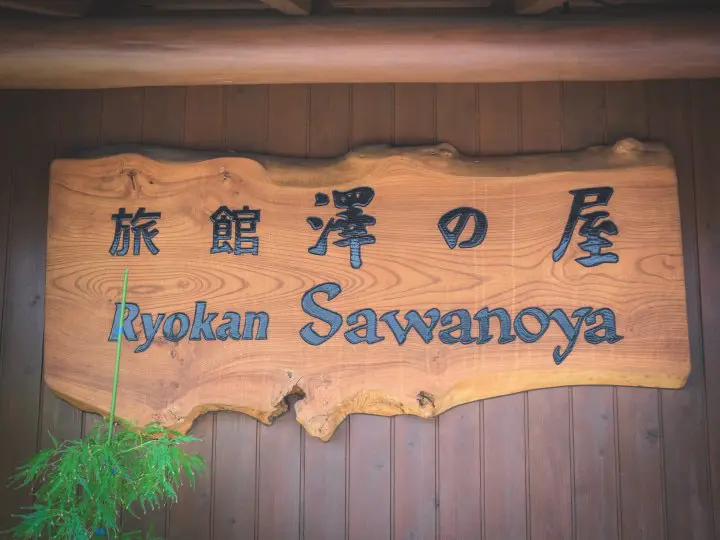
Even the vending machine outside is done in a color scheme that doesn’t clash with the traditional image.
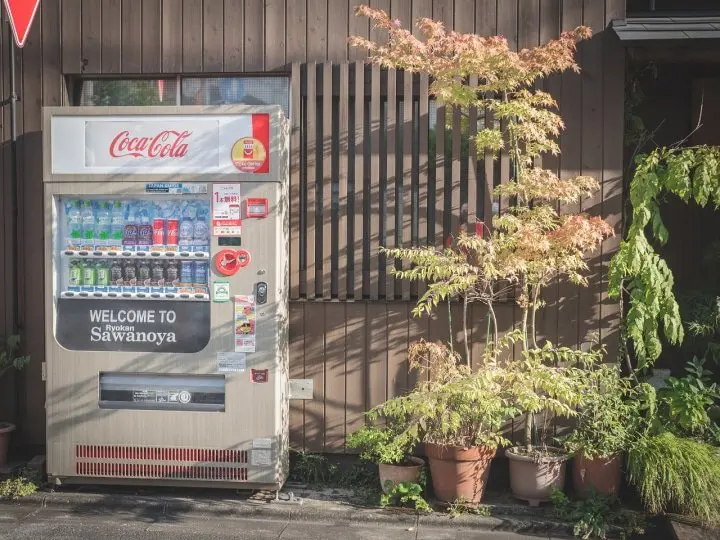
I step in to find a softly lit lobby. The doorway is wooden, and there seems to be an emphasis on natural colors and exposed wood, which is calming to my senses. Straight ahead there is a tokonoma, an alcove, with a hanging scroll.
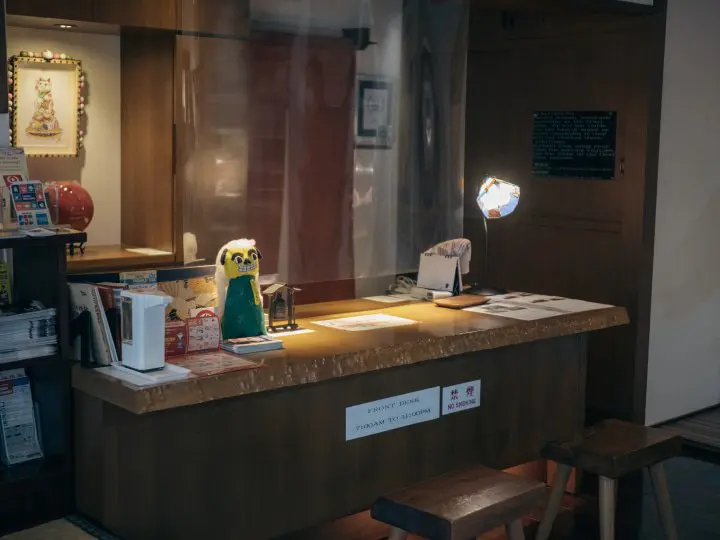
The check-in counter

A small plush toy sits on the counter
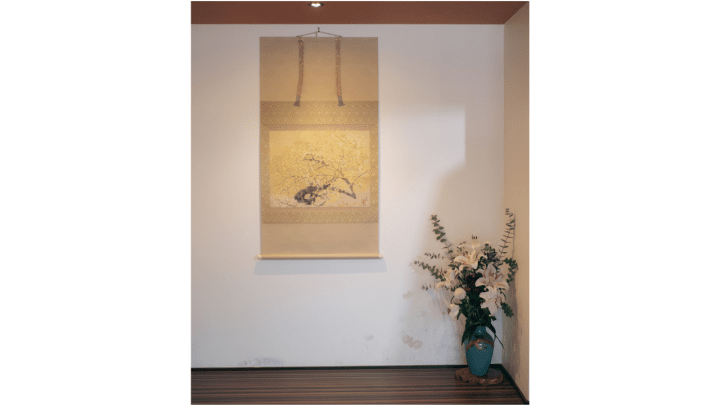
The tokonoma alcove in the lobby
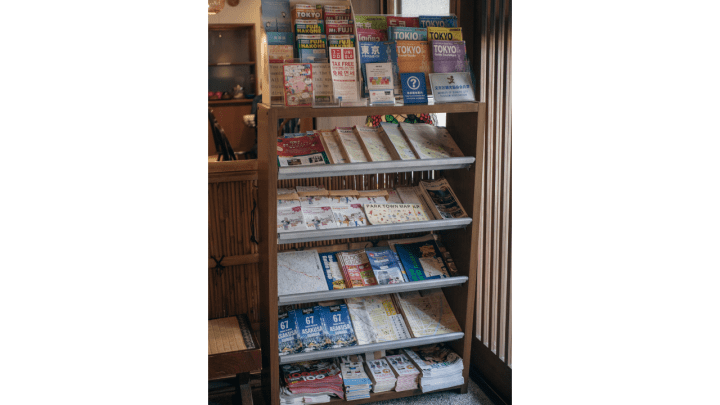
Various guides and maps next to the entrance
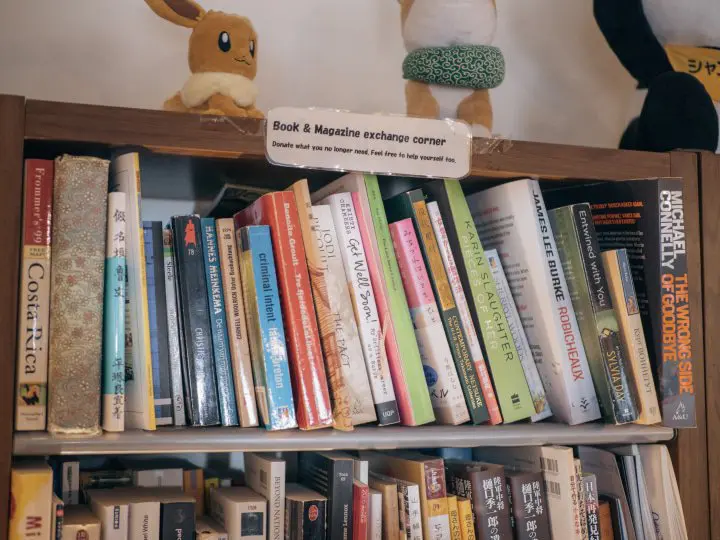
Bood & magazine exchange corner
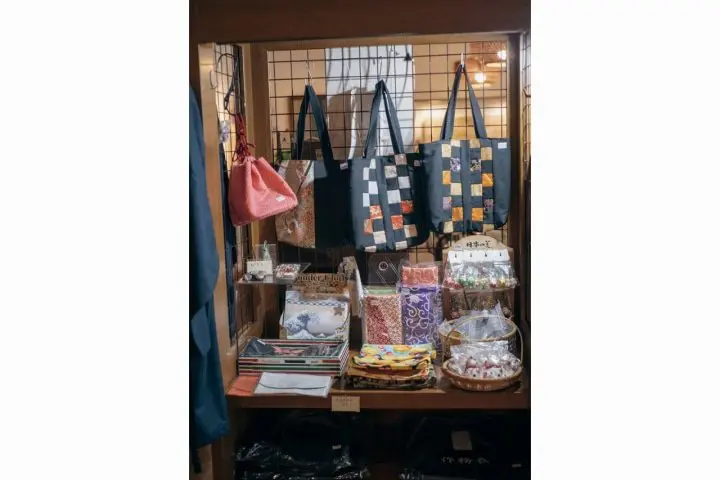
A souvenir corner
As I take a turn at the souvenir corner, I see something I don’t expect - a wall covered with a large map of Japan, surrounded by a couple hundred pamphlets, each dedicated to, I imagine, practically every corner of Japan you could think of. As I look closer, I see that the pamphlets are all in English. All the signs are displayed in English as well.
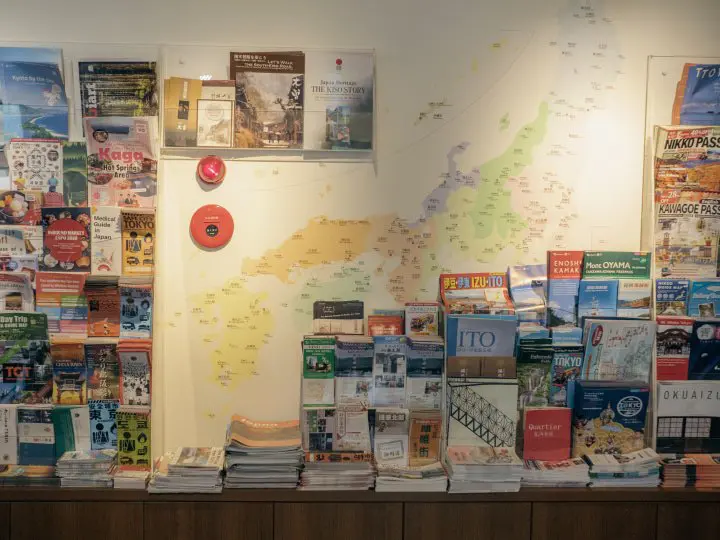
The wall of pamphlets—quite impressive
Third-generation owner Sawa-san comes to greet me, and we sit down to talk at the round wooden table. To my right is another small alcove-type area, with a large beautiful carving of a shishi head—a lion dog head that is an auspicious symbol and often used in the lion dance during New Year’s festivities. The interior design is primarily Japanese-style, decorated by Sawa-san’s mother.


The shishi head
Sawanoya started in 1949 as a ryokan used primarily as a lodging for school field trips and by businesspersons. As Japan entered the 80s, the majority of the guests, who were all Japanese, lost interest in staying at traditional ryokan. Instead, they preferred to stay at hotels, leaving many traditional ryokan in decline.
I can almost feel the pain in Sawa-san’s voice as he mentions that there were days when not a single guest stayed at the ryokan. During this time, traditional ryokan weren’t open to having foreign guests because of cultural differences. For example, removing shoes when entering the house (especially a problem with tatami as shoes will get dirty and damage the straw-woven mats), and the use of the baths (according to Japanese custom, the bathtub is to be used when you are fully clean, after washing yourself in the shower area—the bathwater is shared by multiple people) were common issues.
Before the internet age, it was much more difficult to learn about cultural mannerisms, leading to cultural misunderstandings when it came to staying at a ryokan. However, with the shortage of guests, Sawa-san’s father decided that it was time for a change. In 1982, Ryokan Sawanoya became the pioneer for accepting guests from abroad, and Sawa-san recounts with a laugh how in the beginning they sometimes had guests that pulled the bathtub plug, or made the bathwater soapy like a bubble bath.
Despite the initial difficulties, Sawanoya became a success, going on to teach various ryokan throughout Japan how to prepare the lodging for guests from abroad and creating a wave that impacted the rest of the country. The map of Japan on the wall with all its pamphlets, he says, are all places that his father went to lecture on adapting traditional lodgings for an international audience. Sawa-san shows me a display case packed to capacity with trinkets from various countries. These are our precious treasures, he explains, the souvenirs that Sawanoya has received from its guests throughout the years.

Souvenirs collected from guests throughout the years
Despite having a limited understanding of English, Sawa-san says they get along just fine with gestures and pictures, and the occasional use of a translation app.
One unique aspect of this ryokan is that Sawa-san offers a performance of shishi-mai, lion dance, upon request, for the guests for 10 minutes in the evening. When he was younger, several members of the Taito-ku Hotel Ryokan Association would regularly go to learn how to do the celebratory lion dance from a geisha in Asakusa. Nowadays, Sawa-san is the only member of the association to offer a performance of it for his guests.
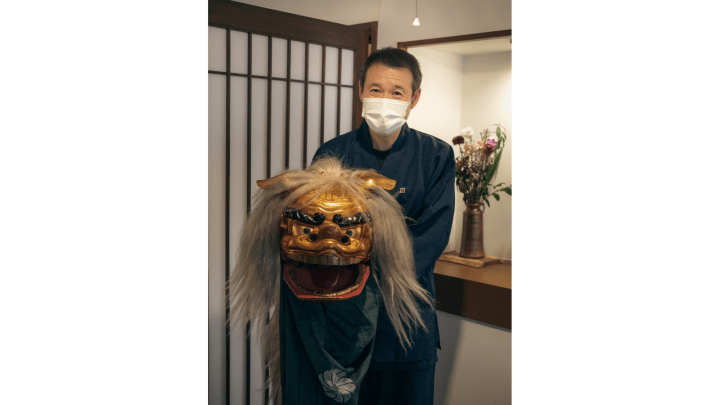
As a bonus, during the New Year’s celebration period, Sawa-san will don the shishi head and “bite” the heads of the guests at check-in (getting “bitten” by the shishi is believed to ward off bad spirits and protect against disease for health and prosperity).
Another interesting service that has become especially popular during the pandemic is participation in a plush-toy tour. During the last few years Sawanoya has had plush toys as some of its regular guests. As I listen, Sawa-san explains that there is a tour for people who can’t physically go long distances on vacation, either because of the pandemic or other reasons.
Can’t make it out to your favorite spot? No problem, you can send your plush toy to the tour company to act as your avatar, and they will take it to various locations (such as this ryokan), taking various photos so you can feel like a part of you is there. Of course, this service is available for domestic residents as well, but several guests from abroad have even sent their plush animals all the way to Japan in order to stay at Sawanoya, since they themselves can’t travel.
Sawa-san shows me a miniature futon that is made especially for stuffed toys, and even a photo panel for the plush, holding the shishi. Photos are taken of the toy checking in, relaxing in the room, and even taking a bath!
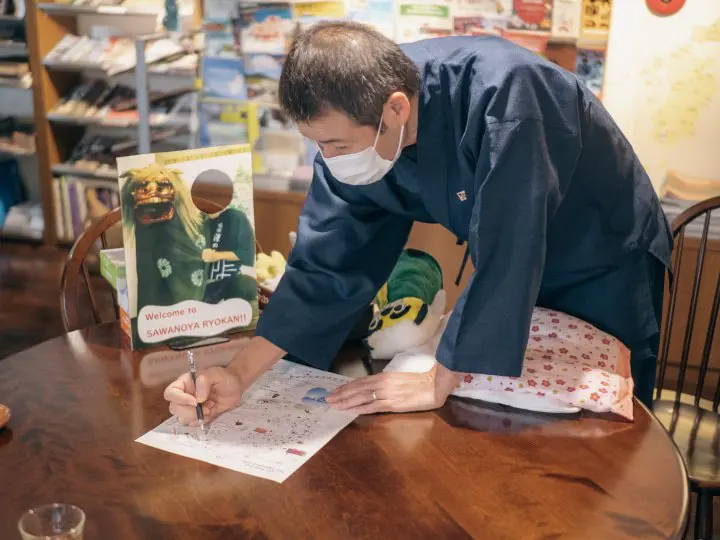
Your plush toy can take a photo pretending to be Sawa-san with this photo panel!
This family-run ryokan is a little on the large side with a total of 12 rooms, two of which have their own private bath and toilet.
Contrary to the Japanese-style interior, the breakfast offered here is completely western-style. Its location near the Yanesen (Yanaka, Nezu, and Sendagi) area provides the perfect lodging within walking from these three traditional shitamachi towns. Surrounded by quiet, quaint streets and plenty of shrines and temples with traditional architecture, this area is great for exploring the more nostalgic side of Tokyo.
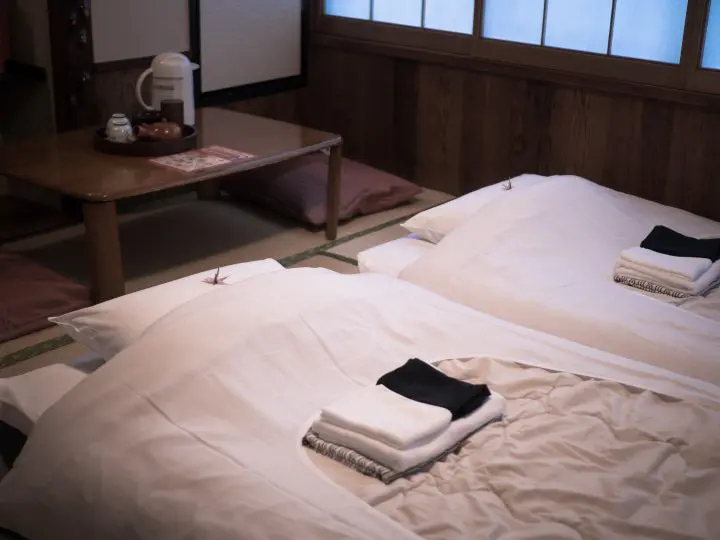
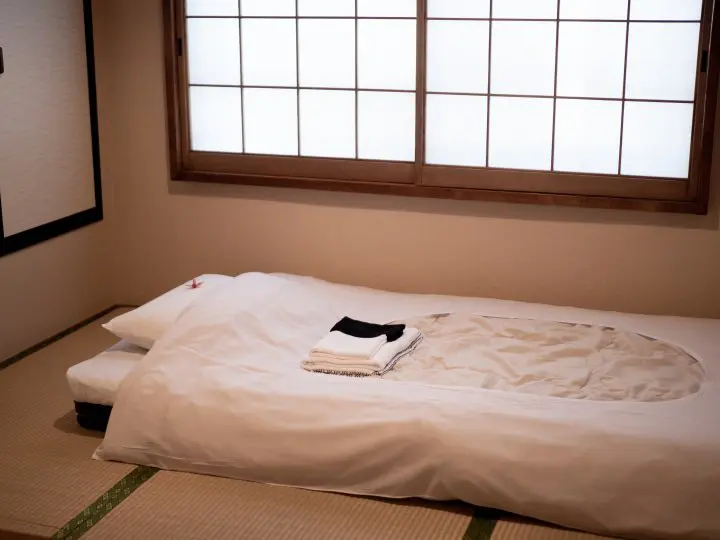

A folded origami crane on the guest’s pillow—a touch of Sawanoya’s omotenashi (hospitality)


Soothing natural light in a traditional tatami room
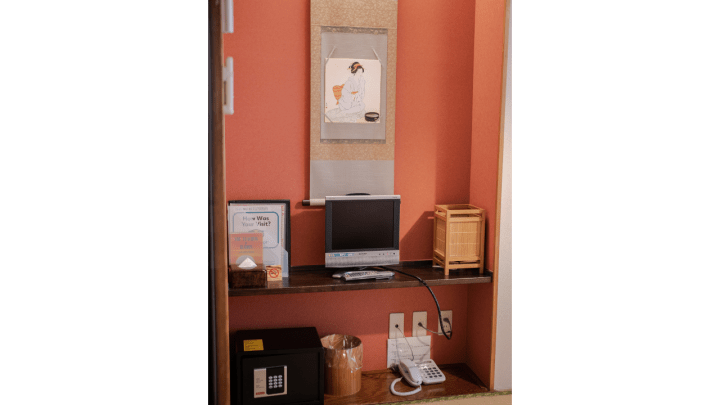
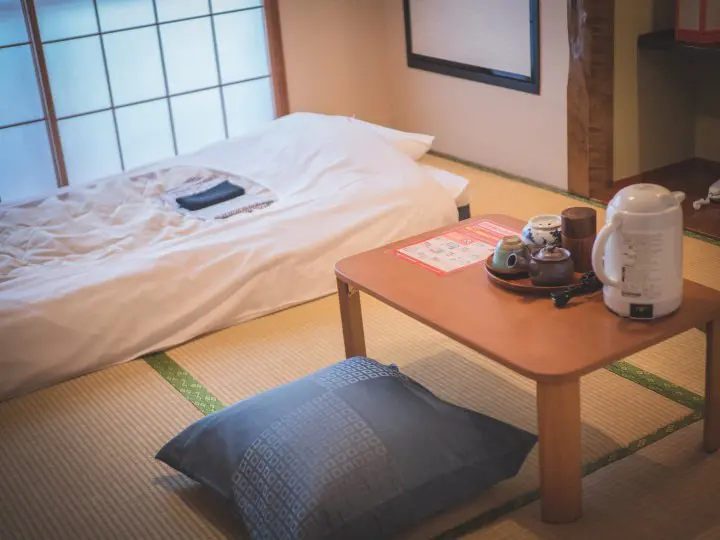
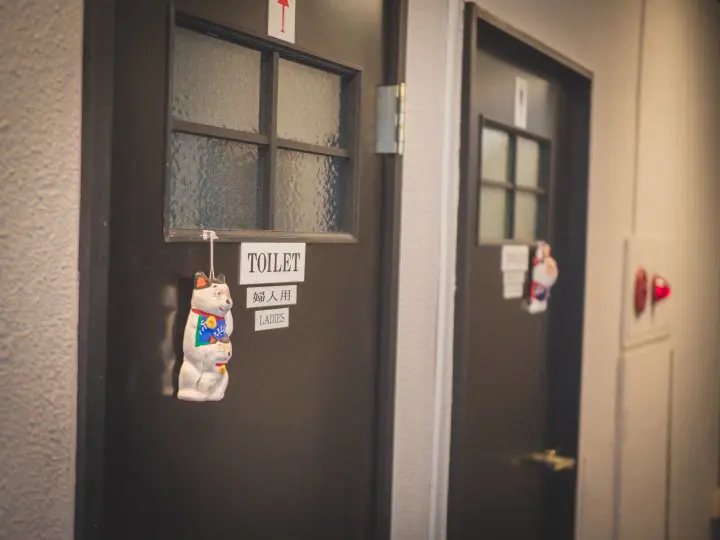
Shared bathrooms
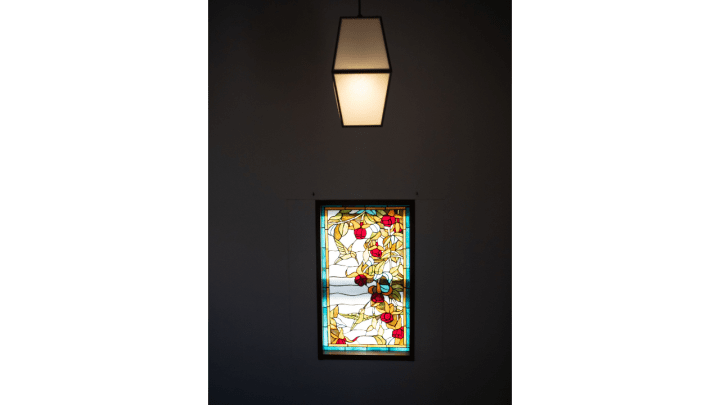
Stained glass window in the stairwell—a stark contrast to the overall Japanese atmosphere
Another perk is that during the pandemic Sawanoya also offers day use of the rooms and even a bath-only plan. For the day-use plan, you can stay in the room from 9:00 until 19:00. This is perfect for a telework day, as all the rooms have free Wi-Fi, and everything you need to use the bath is included as well. You can also book this plan if you’re exploring the Yanesen area and want a place to go back to and relax. Of course, you can also bring your own snacks and food to enjoy in the room as well. At 3,300 yen per person, the day plan is quite affordable.
However, if spending time in the room is not something you’re interested in, you can also take advantage of the private bath-only plan (towels, dryer, and shampoo included) for a mere 500 yen! The two baths, one hinoki (Japanese cypress) and one ceramic, both have a small window with a small view of the garden, the perfect place to meditate on your next plans.
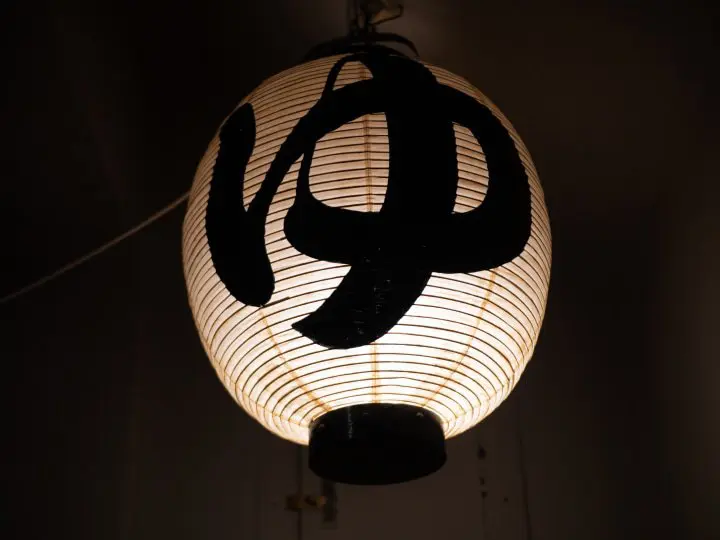
A large lantern with the character ゆ—signifying the bath
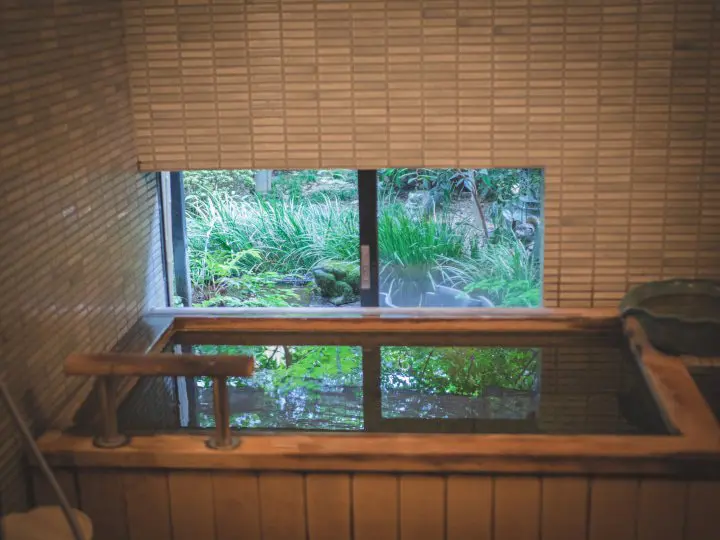
The hinoki bath

The ceramic bath
The surrounding area, an 8-minute walk from the Yanaka area, is filled with traditional shops—a sweets shop, a senbei shop, and a book store are all a few minutes away.

If you find yourself wanting to explore the Yanesen area, I hope you will stop by for a night, or even a day visit.
And if you’re reading this from abroad, perhaps you can join one of the plush toy tours to experience Sawanoya’s hospitality in your stead, for now.
Hotels near Ryokan Sawanoya
I am an actress and model living in Japan. Tokyo Ryokan Stories is my essay series about less-known but amazing ryokan and hotels in Tokyo.



